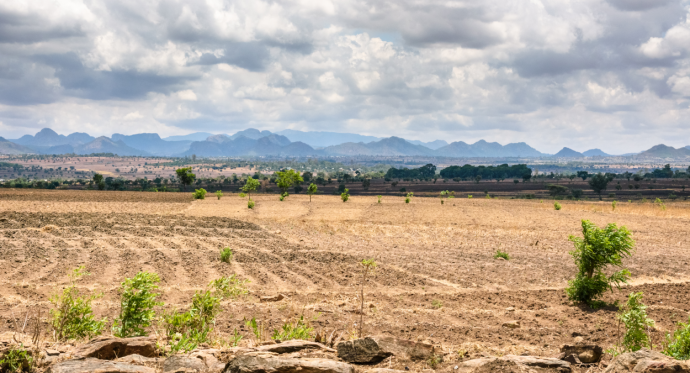Luis Becerra-Valbuena and Katrin Millock*
- This article was originally published in the May 2021 edition of the 5 papers…in 5 minutes.

In poor countries with populations that are very dependent on agriculture, the impact of extreme weather events can be severe. If safety nets or other transfers do not exist, marriage of under-age daughters could be used as a coping strategy of poor families. A nascent literature in development economics has studied how different marriage institutions, notably dowry and bride prices, affect the responses to weather shocks through the timing of marriages and in particular the incidence of child marriages (1).
In this article, Luis Becerra-Valbuena and Katrin Millock construct a retrospective panel using data from the Living Standards Measurement Study-Integrated Surveys of Agriculture (LSMS-ISA) from Malawi over the period 2000 to 2016 combined with meteorological indices of drought. Malawi experienced several drought episodes during this period and the authors compare individuals in similar age groups moving in the same year, some from districts with drought, some from districts without drought, using a quasi-experimental setting. Traditionally, Malawi practices patrilocality under which men pay bride prices to the family of the bride, and the bride moves to the groom’s family. In such a setting a drought could lead to an increase in child marriages and the authors set out to test this hypothesis. The authors use the stated reasons for migration to analyze female and male migration patterns following drought. Women in Malawi migrate for marriage mainly within their district of origin, and if drought affects the entire district, there may also be fewer men who are able to pay bride prices. Following moderate drought, the authors observe a small decrease in the probability of migration for marriage within the same district for girls aged between 10 and 17 years old, which would be compatible with such a “supply-side effect” in the marriage market. This interpretation is also compatible with the finding that marriage-related migration outside of the district of origin displays no significant change following drought in the same age category.
On the one hand, the authors find little evidence of an increase in migration for marriage following drought for girls aged between 10 and 17 years old. On the other hand, they find that both men’s and women’s work-related migration between districts increase following severe drought, to a larger extent for boys but also for girls. Since marriage-related migration may not always be reported, especially for under-age girls, the authors also combine the stated motives of migration for marriage and for work. When both work- and marriage-related motives for migration are combined, the authors find an increase of two percentage points in the probability of migration of young girls following severe drought. The article thus gives evidence on the different migration responses for men and women following drought. It also contributes to the literature on marriage institutions in poor countries, and how they shape migration, as a household decision, across different distances. As such, the article opens interesting perspectives to further investigate the links between weather shocks, marriage institutions and policy to limit the impacts of climate change in poor countries.
(1) E .g., Corno, L., N. Hildebrandt and A. Voena (2020) Age of marriage, weather shocks, and the direction of marriage payments, Econometrica 88(3), 879–915. Hoogeveen, J., B. van der Klaauw and G. van Lomwel (2011) On the timing of marriage, cattle and shocks, Economic Development and Cultural Change 60(1), 121–154
………………..
References
Original title of the article: Gendered migration responses to drought in Malawi
Published in: Journal of Demographic Economics (2021) – forthcoming
Available at: https://doi.org/10.1017/dem.2021.8
Credits (picture): JULIAN LOTT – Shutterstock
* PSE Member
